It seems we can’t find what you’re looking for. Perhaps searching can help.
Sign Up for newsletter!
Subscribe to get the latest eBook!
Hotline






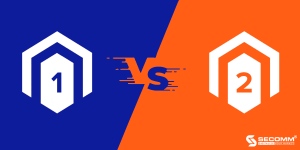
Magento is a specialized open-source platform for creating the most popular eCommerce websites today.
Currently, it supports two versions: Magento 1 and Magento 2. Some websites use M1 platform, such as CellphoneS, and Bach Long Mobile (Magento Open Source 1.9). Websites using M2 such as Di Dong Viet, and Kidsplaza (Magento Open Source 2.3).
So what is the difference between the two versions, and why have businesses not upgraded their websites to M2?
M2 uses newer technologies than M1, resulting in more diverse performance, user experience, and functionality.
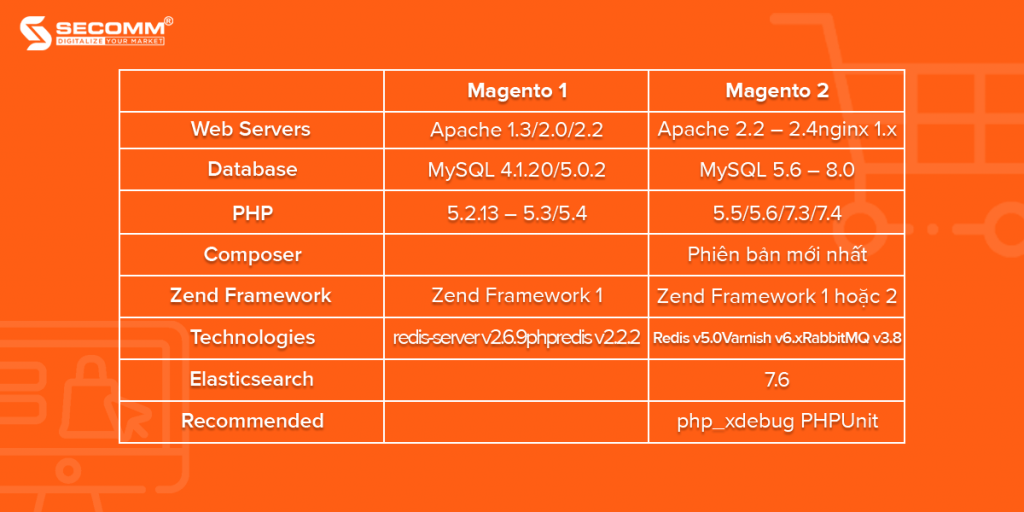
Both platforms support a wide range of third-party extensions. However, many utilities on M1 will frequently repeat a piece of code, causing conflicts for the website’s functional system, and requiring a significant amount of time to manually fix it. Meanwhile, Magento 2 has supported a plugin that allows code to overlap, assisting in the issue’s faster and more effective resolution.
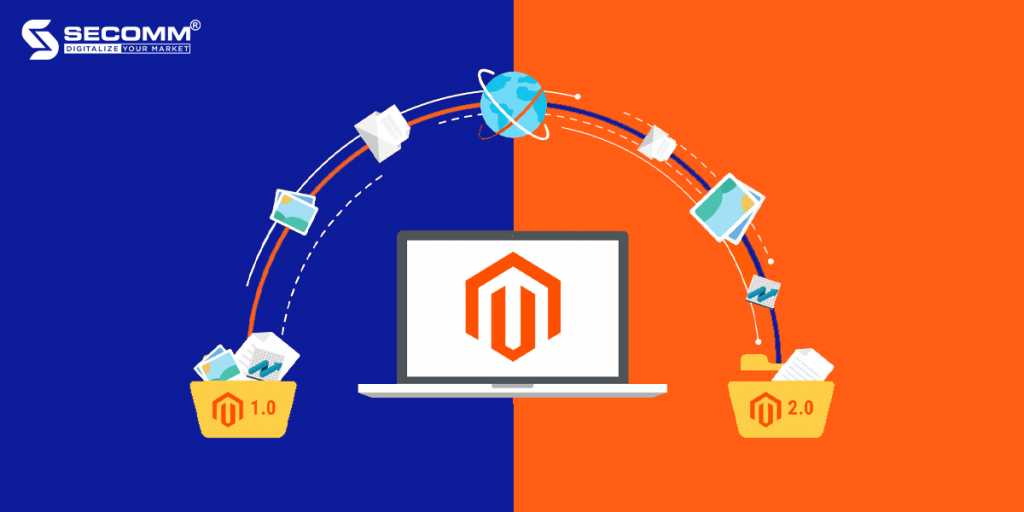
At the same time, M2 support utilities frequently use new technologies (HTML5, CSS3, Requirejs) at lower prices. Compared to M1, this makes it easier for developers to customize, upgrade, and build new functionality for the website.
Magento 1 is frequently criticized for having a messy admin interface that takes a long time to adapt. In contrast, Magento 2 is more user-friendly for admin accounts because:
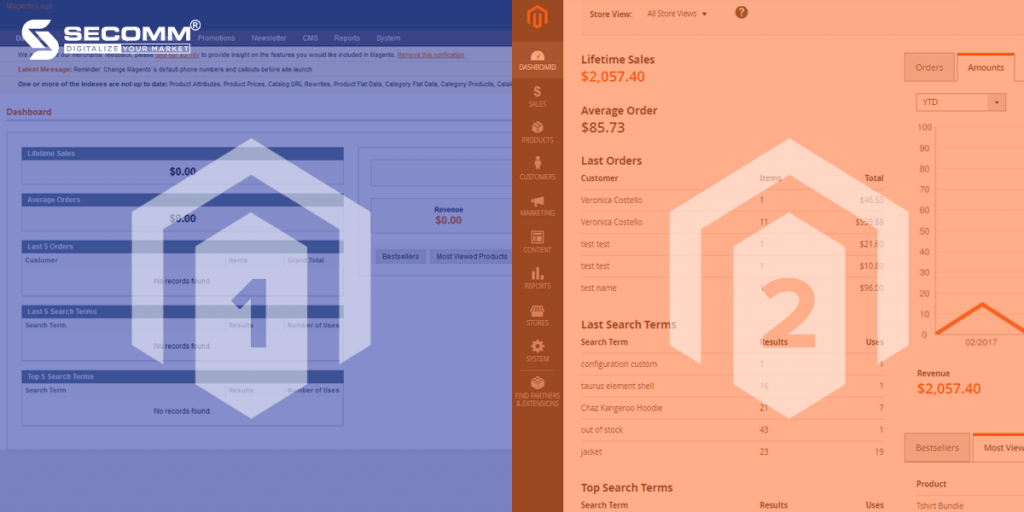
Magento has long been known for its SEO capabilities, but developers can improve SEO even better with Magento 2:
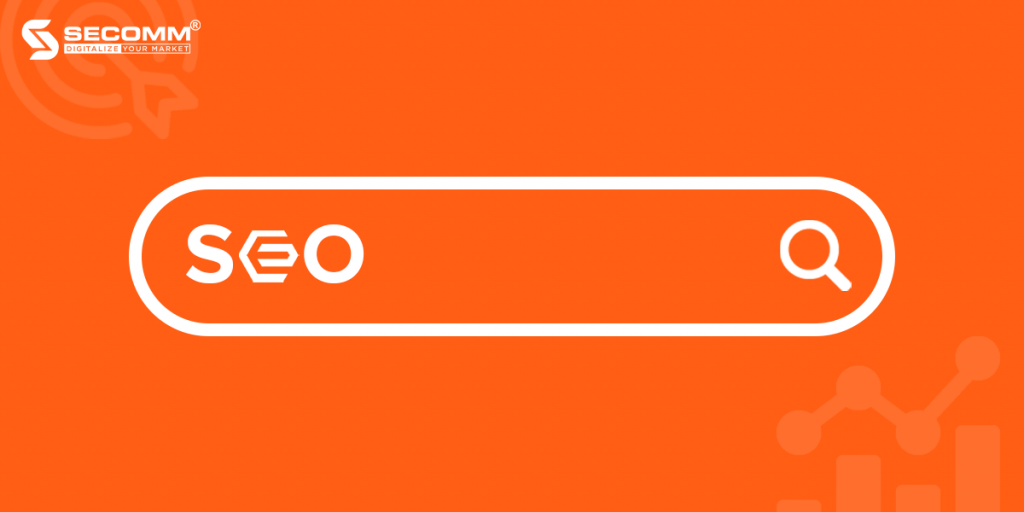
Since June 2020, Magento has stopped updating and releasing security patches and fixes for M1. Therefore, M1 websites easily become a target for cyber attacks.
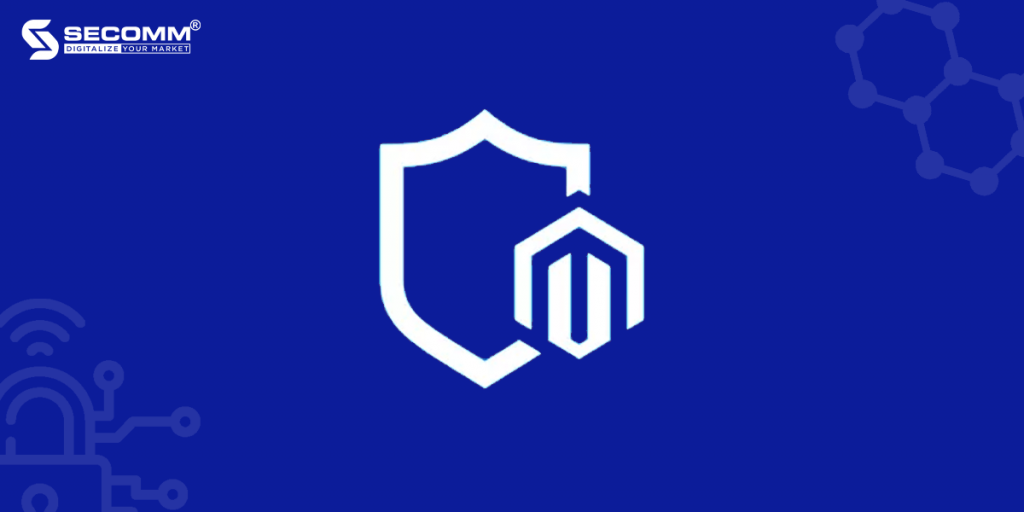
Meanwhile, the publisher continuously updates M2 to increase the system’s security. For example
M1 continues to meet enterprise eCommerce systems’ interface, functional systems, and management system requirements. As a result, businesses continue to use M1 rather than upgrading to M2. At the same time, the Magento technical community continues to support the utilities for M1 enthusiastically.

Although Magento 2 provides many improved utilities, its technologies are still relatively new for many companies, particularly those in countries that have lagged behind eCommerce market growth.
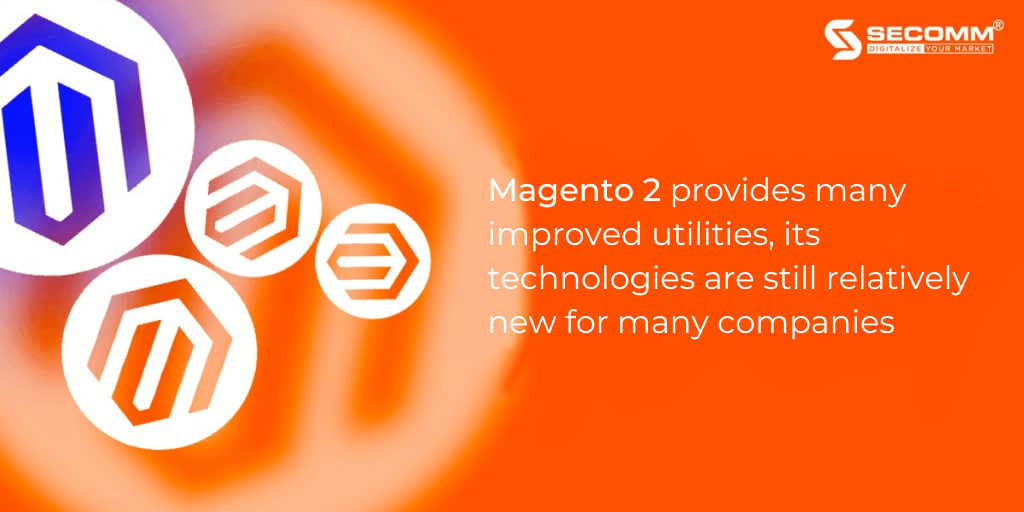
Upgrading from M1 to M2 is difficult because the technology infrastructure is entirely different between the two versions. As a result, website developers will require a significant amount of time to migrate all functions and data from M1 to M2, ranging from 1 to 3 months on average.
In addition, businesses require a technical team with expertise in new technologies to manage the system and efficiently upgrade the website. As a result, the upgrade costs more, ranging from $5,000 to $10,000 or more, depending on the system’s complexity.
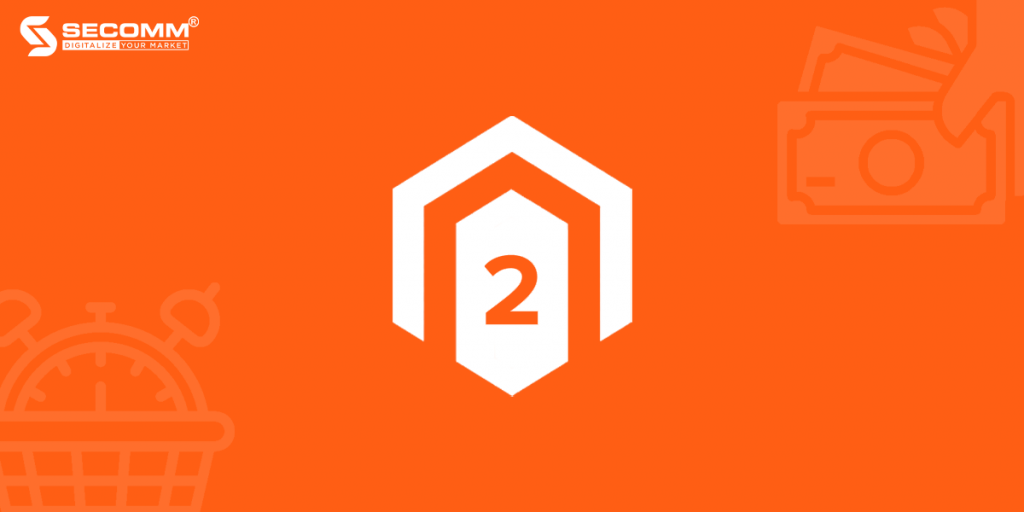
Although M2 outperforms M1 in every way, many businesses are hesitant to upgrade their websites to M2 due to various issues. However, upgrading the website to M2 is unavoidable in the long run due to the growing gap between the two versions.
Our company – SECOMM, has been partnering with many big enterprises such as An Nam Group (Vietnam), Jasnor (Australia), and Changi Airport Group (Singapore). As a result, we are aware of the challenges and worries firms face while developing an eCommerce website system as well as upgrading their websites from M1 to M2.
Get in touch with us now for FREE eCommerce development consultancy and solutions
 2
2
 4,106
4,106
 0
0
 1
1Subscribe to get the latest eBook!
Hotline